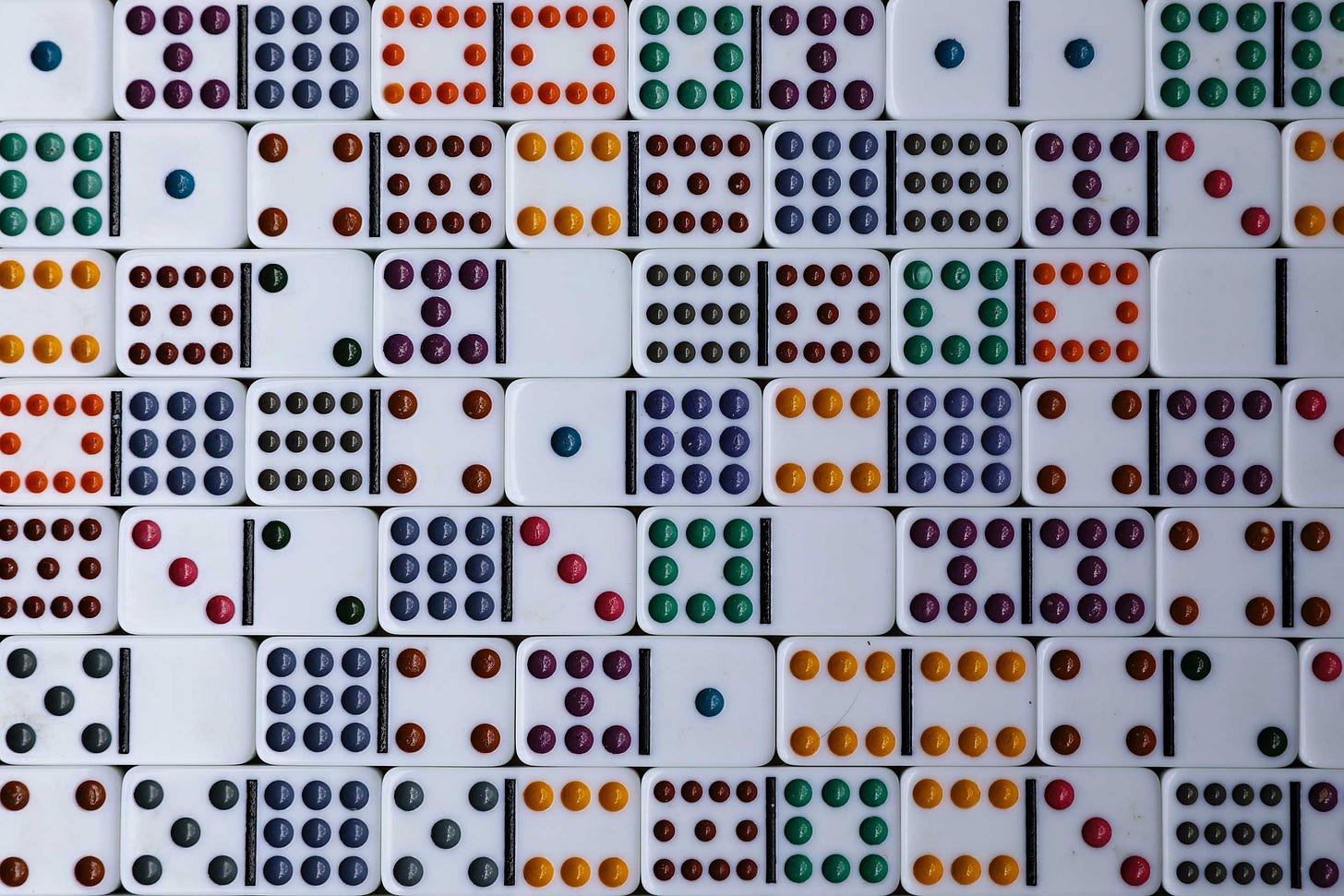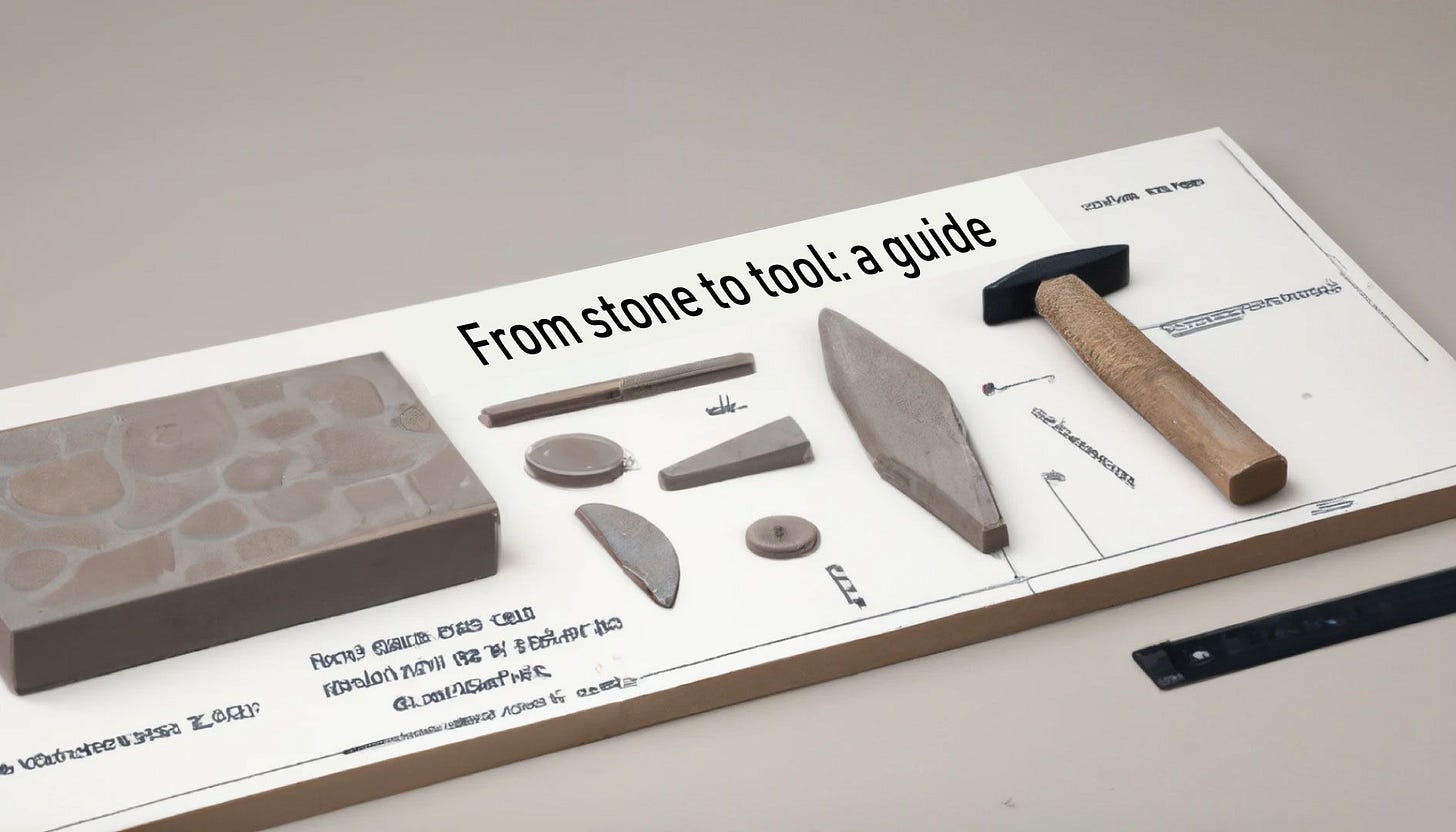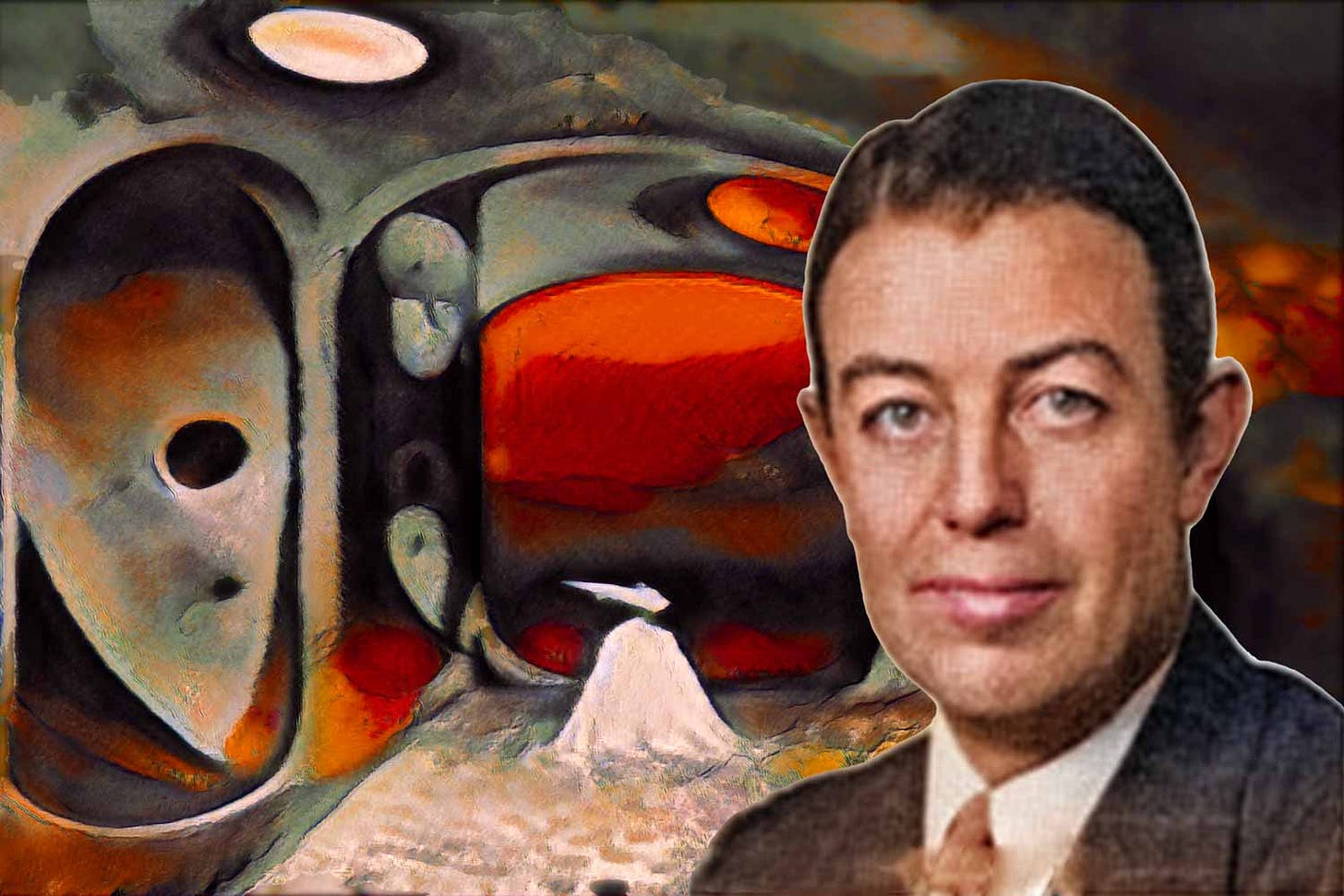Understanding numbers as cognitive technology
The Whorf hypothesis says language shapes human thought. A small indigenous group with few number words puts the idea to the test.

What is technology? People often define it in terms of material products. In this way of thinking, the things that humans make are technology.
As a scientist who looks at the deep human past, I'm often thinking about stone tools and other early material evidence of technology. My fieldwork centers around finding some of the things that ancient humans and our relatives made. So it's convenient to equate technology with the production of material things.
But there’s another way to think about the things we make. To make things, people use and exchange information. From a certain point of view, this information, this know-how, is exactly what technology is. Real technology is the instruction set, not the assembled product. Manufacturing may have physical side effects, but it’s the cognitive software that lies at the heart of technology.
The etymology of the word, “technology”, points to craft and tradition rather than the stuff itself:
TECHNOLOGY: from Greek tekhno-, combining form of tekhne “art, skill, craft, method, system,” probably from Proto-Indo-European base *tek- “shape, make” (cf. Sanskrit. taksan “carpenter,” L. texere “to weave;” see texture).
If we take this perspective, then some technology may never be instantiated in material at all. Some technology resides only within the mind.
Pirahã is a language spoken by a group of around 700 indigenous people, also known as Pirahã, who live along the Maici River of Brazil. Linguists have long been interested in Pirahã because it has several unusual features compared to many other languages. Daniel Everett is a linguist who has spent much of his career studying the intricacies of the Pirahã language. In 2008, he joined with the developmental psychologist Michael C. Frank and other collaborators to examine one unusual aspect of Pirahã: the language does not have words for cardinal numbers.
English, like many languages, is equipped with words to specify exact numbers. English speakers can count up to twenty without repeating or combining words, and above twenty they can combine words—twenty-one, twenty-two—to count as high as they like. They may be limited by their endurance but not by the words available in the language.
A precision about numbers is valuable in a world where accounting and cash transactions are part of everyday life. Counting accurately helps people trade to mutual advantage with others whom they may not know, alert to the possibility of being cheated. As recently as the eighteenth century, speakers of English were still transforming their use of number words, with the common usage one and twenty quickly falling away in favor of the shorter twenty-one. Exactitude and speed enable commerce.
But such precision is superfluous for people in cultures where one-time economic exchanges rarely happen. Insisting on exact quantities may even be damaging, since long-term maintenance of reciprocity requires flexible give-and-take in any single exchange.
The Pirahã language has words for quantity, but these refer to approximate and not exact quantities. As described by Frank and coworkers, hói means “approximately one”, hoí means “approximately two, or a few”, and baágiso means “many”, or “three or more”. Speakers of the language don't count using words, and they are not reported to use finger counting or other physical tallies for counting.
During the early 1990s, the psychologist Peter Gordon spent several months with the Pirahã, where Daniel and Keren Everett facilitated his fieldwork. Gordon became interested in the lack of counting words in the Pirahã language and designed some simple experiments to see whether speakers of Pirahã could keep track of small numbers of objects. His aim, as he later reported in a 2004 article in Science, was to examine a classic question in linguistics: whether “language can determine the nature and content of thought”.
This question originated during the 1920s and 1930s, as anthropologists worked to understand how languages function within cultures. The anthropologist Edward Sapir proposed that speakers of different languages may have different ways of perceiving reality. His idea was rooted in the observation that it is difficult or impossible to translate some words and grammatical structures from one language to another.
“The worlds in which different societies live are distinct worlds, not merely the same world with different labels attached.”—Edward Sapir
Over the rest of the twentieth century, linguists and anthropologists explored this concept of linguistic relativity. They detailed grammatical and semantic differences among languages that seemed to reflect different ways of organizing space, time, or society.
The anthropologist who pushed linguistic relativity the farthest was Benjamin Lee Whorf. He described the way that different languages organized grammar and words related to the passage and measurement of time, and argued that language not only reflects the experience of time; language constrains that experience.
For Whorf, concepts of number provided a window into the ways that minds can bridge between immediate experience and the imaginary. The experience of seeing a group of five people can be shared by anyone standing before them. But days can only be experienced one at a time. A count of five days is in some sense a metaphorical connection to the quantity of five people—a metaphor that English readily enables, but some languages do not.
“A category such as number (singular vs. plural) is an attempted interpretation of a whole large order of experience, virtually of the world or of nature; it attempts to say how experience is to be segmented, what experience is to be called ‘one’ and what ‘several.’”—Benjamin Lee Whorf
Whorf's ideas about linguistic relativity were controversial. Some psychologists and anthropologists challenged Whorf's descriptions of the people he had studied. It was true, they acknowledged, that ideas could be lost in translation. But these other researchers found examples of how people work around the limitations of language to convey the same information. Other researchers composed experiments to better understand the influence of language on experience. Since the 1960s, for example, a long literature has grown up around the way that words for colors within various languages may shape the way that people perceive colors.
Peter Gordon saw an opportunity with the Pirahã to see whether their language made a difference to their ability to work with numbers of objects. He set up a series of simple experiments in which people were asked to keep an accurate count of a small number of objects, such as nuts or batteries.
Gordon found that Pirahã speakers could match numbers of different kinds of objects quite reliably up to sets of seven or eight objects, as long as they could see the objects all together. But tasks that required them to remember the exact number of objects for a brief time proved to be very challenging. They could remember and match quantities of two or three objects, but their accuracy quickly declined when they needed to remember five or more.
The 2008 study by Michael C. Frank, Everett, and collaborators was a follow-up to examine the outcomes of Gordon's experiments in more detail. These new experiments included more Pirahã individuals as participants, and the researchers talked with them about what they were thinking during the tasks.
The experiments yielded the same picture as the earlier work by Gordon. Pirahã people had little trouble matching exact numbers of objects, even with different kinds of objects in different groupings, as long as they could see and compare them directly. Their performance on these tasks showed that Pirahã individuals can work with a concept of exact number, by using strategies like matching one-for-one.
Again, Pirahã participants did not match numbers of objects accurately when they could not see both sets and compare them. Such tasks rely on memory. Without words to express exact numbers, Pirahã speakers lack a tool that speakers of many other languages use to help their memory.
Frank and coworkers wrote about how the experiment's results might be relevant to the idea of linguistic relativity. A very strong idea of linguistic relativity would suggest that without words for exact numbers, the Pirahã should be unable to hold a concept of exact number at all. The experiments showed that this strong linguistic relativity idea is wrong. Pirahã speakers can work with exact quantities and match numbers accurately, even without number words.
That result by itself wasn't news. The so-called strong linguistic relativity hypothesis proposes that people can't think about things when they have no words for them. That extreme idea just doesn't match reality. After all, today we think about many kinds of things that once had no words to describe them, from genes to galaxies. If past people couldn't think about these things without words, they could not have invented the words that make it easy for us to talk about them today.
The Pirahã research participants help shed light on how number words work in the languages that have them. Number words supply individuals with a way to remember quantity and compare it between different kinds of objects at different times and places. Without these words, remembering and carrying out such comparisons is hard—hard enough that many people find the exercise pointless.
“[N]umbers may be better thought of as an invention: A cognitive technology for representing, storing, and manipulating the exact cardinalities of sets.”—Michael Frank and coworkers
In that more limited sense, Whorf had the right idea about numbers. Seeing five nuts on a table is a different experience than taking five nuts out of a can. Living five days is a different experience than meeting five people, or collecting five rocks. There are some disadvantages to locking yourself in to the idea that the same number must always be alike. In a foraging society, feeding seven people for one meal may not be a very different social act from feeding eight people, and neither shares much with the act of feeding one person for seven meals.
In commercial societies, these distinctions start to matter in a different way. Such societies have invented ways for businesses to compare, price, and equate these different experiences. Numbers are essential to enable such comparisons.
When my children were first learning math, they used several different cognitive strategies. Early on, their mastery of number depended on counting objects, which they tracked using fingers and toes. When they got to higher numbers, they would carry out operations by envisioning imaginary fingers and toes in their heads. Later, they learned several different strategies to break up numbers and regroup or double them, allowing them to easily add and subtract two-digit numbers. As a parent it was amazing to see this process of learning unfold.
Looking at it now, each of these successive strategies reveals a different way of organizing mathematical operations. We can learn relationships between numbers that enable us to pattern large numbers to add, subtract, or carry out other operations faster or with fewer mistakes. In more traditional math curriculum, teachers and textbooks presented these different operations in a rigid order, leaving little choice about how to choose algorithms for each operation. The “new math” that so many parents decry today is an attempt to enable students to learn deeper concepts that provide greater freedom of choosing algorithms.
How do children choose? Even as adults, how do we know which methods will achieve our goals, whether they are speed, accuracy, or something else?
An extreme way of looking at these questions is that we really have no choice. Each new cognitive trick changes the way our minds work. In doing so, they change the way we experience the world—both expanding and constraining our imaginations. It takes practice and memorization, with some guidance and some reinforcement through trial-and-error. Most of us learned parts or all of this process in our schooling somewhere. There’s nothing magical about it—we just have to learn and practice the algorithms that help to escape the limits on counting and remembering sums as we go.
Words and concepts provide ways to escape the limits on human short-term memory. The Pirahã lack a shorthand for cardinal numbers that speakers of other languages tend to have. Culture and language provide the gears of cognitive technology. It's a powerful concept that we should apply more broadly when we try to understand past cultures. It is misleading to look at the most minimal stone tools, or the organic tools of other primates, as the simplest technologies. Technology begins with habits of mind, developed as strategies to better process regularities in the social environment.
References
Carroll, J. B. (1956). Language, Thought, and Reality: Selected Writings of Benjamin Lee Whorf. MIT Press, Cambridge MA.
Frank, M. C., Everett, D. L., Fedorenko, E., & Gibson, E. (2008). Number as a cognitive technology: Evidence from Pirahã language and cognition. Cognition, 108(3), 819-824. https://doi.org/10.1016/j.cognition.2008.04.007
Gordon, P. (2004). Numerical cognition without words: Evidence from Amazonia. Science, 306(5695), 496-499. https://doi.org/10.1126/science.1094492
Pagel, M., & Meade, A. (2018). The deep history of the number words. Philosophical Transactions of the Royal Society B: Biological Sciences, 373(1740), 20160517. https://doi.org/10.1098/rstb.2016.0517
Sapir, E. (1929). The status of linguistics as a science. Language, 207-214. https://www.jstor.org/stable/409588




